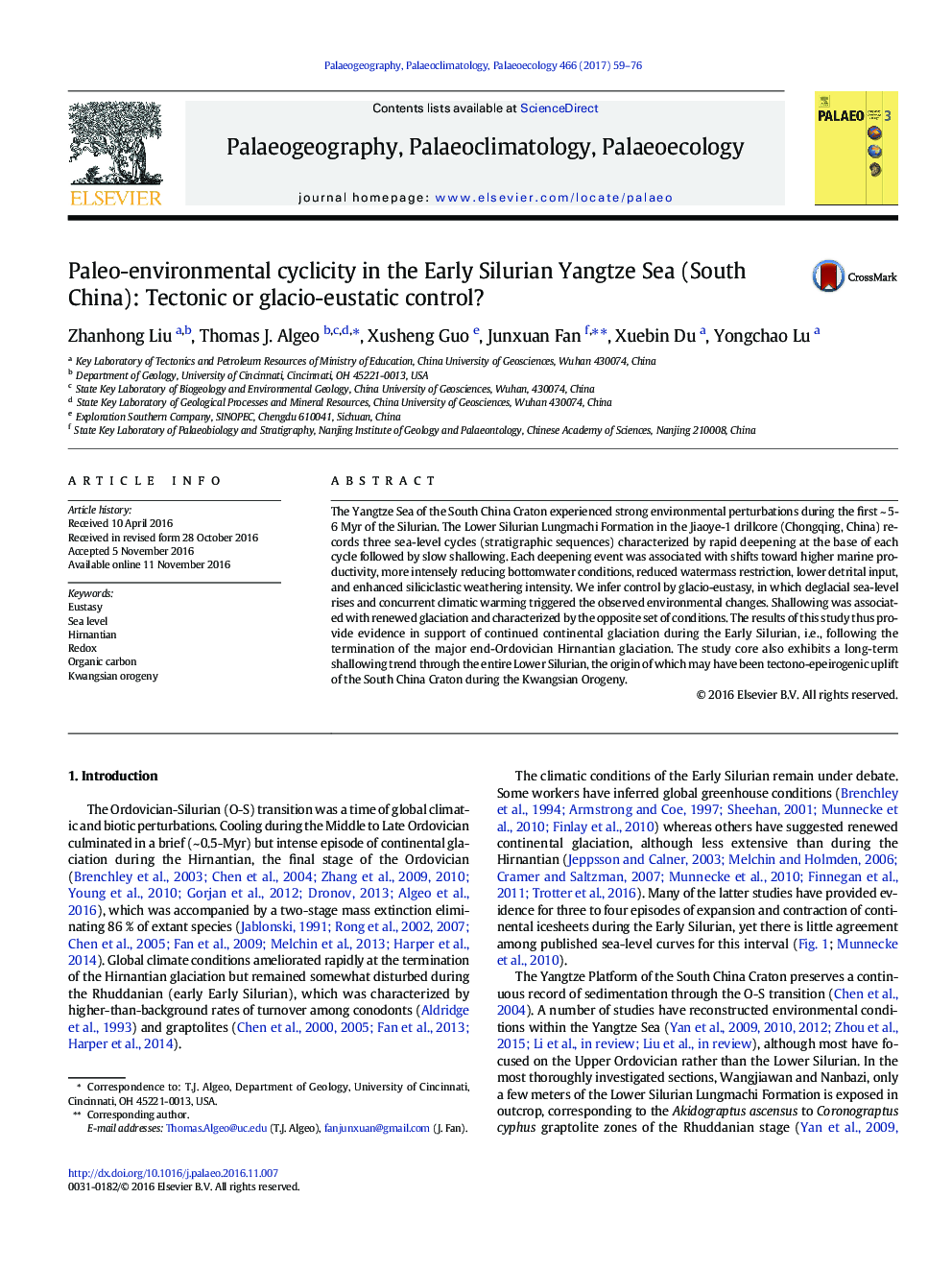| Article ID | Journal | Published Year | Pages | File Type |
|---|---|---|---|---|
| 5756019 | Palaeogeography, Palaeoclimatology, Palaeoecology | 2017 | 18 Pages |
Abstract
The Yangtze Sea of the South China Craton experienced strong environmental perturbations during the first ~Â 5-6Â Myr of the Silurian. The Lower Silurian Lungmachi Formation in the Jiaoye-1 drillcore (Chongqing, China) records three sea-level cycles (stratigraphic sequences) characterized by rapid deepening at the base of each cycle followed by slow shallowing. Each deepening event was associated with shifts toward higher marine productivity, more intensely reducing bottomwater conditions, reduced watermass restriction, lower detrital input, and enhanced siliciclastic weathering intensity. We infer control by glacio-eustasy, in which deglacial sea-level rises and concurrent climatic warming triggered the observed environmental changes. Shallowing was associated with renewed glaciation and characterized by the opposite set of conditions. The results of this study thus provide evidence in support of continued continental glaciation during the Early Silurian, i.e., following the termination of the major end-Ordovician Hirnantian glaciation. The study core also exhibits a long-term shallowing trend through the entire Lower Silurian, the origin of which may have been tectono-epeirogenic uplift of the South China Craton during the Kwangsian Orogeny.
Related Topics
Physical Sciences and Engineering
Earth and Planetary Sciences
Earth-Surface Processes
Authors
Zhanhong Liu, Thomas J. Algeo, Xusheng Guo, Junxuan Fan, Xuebin Du, Yongchao Lu,
